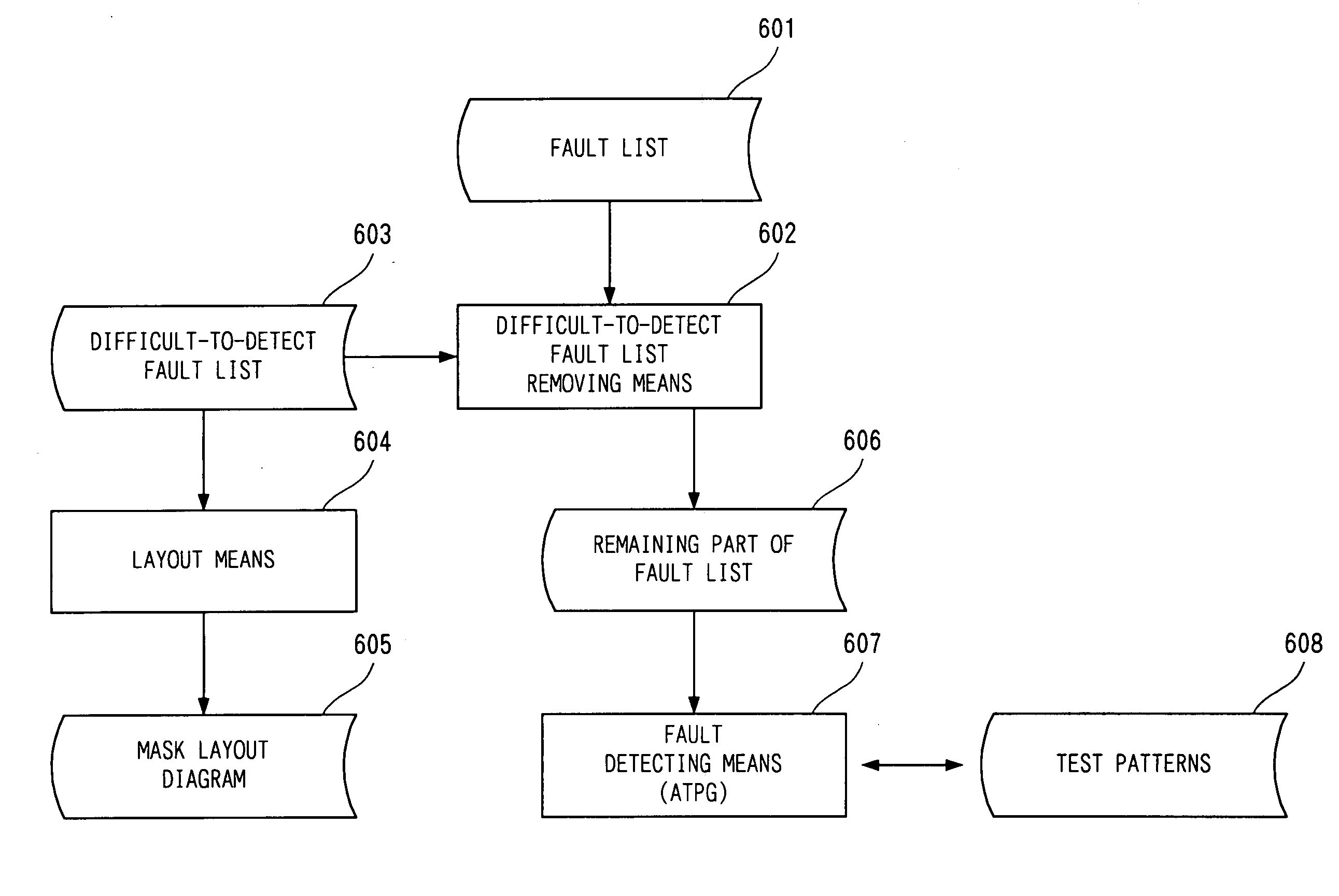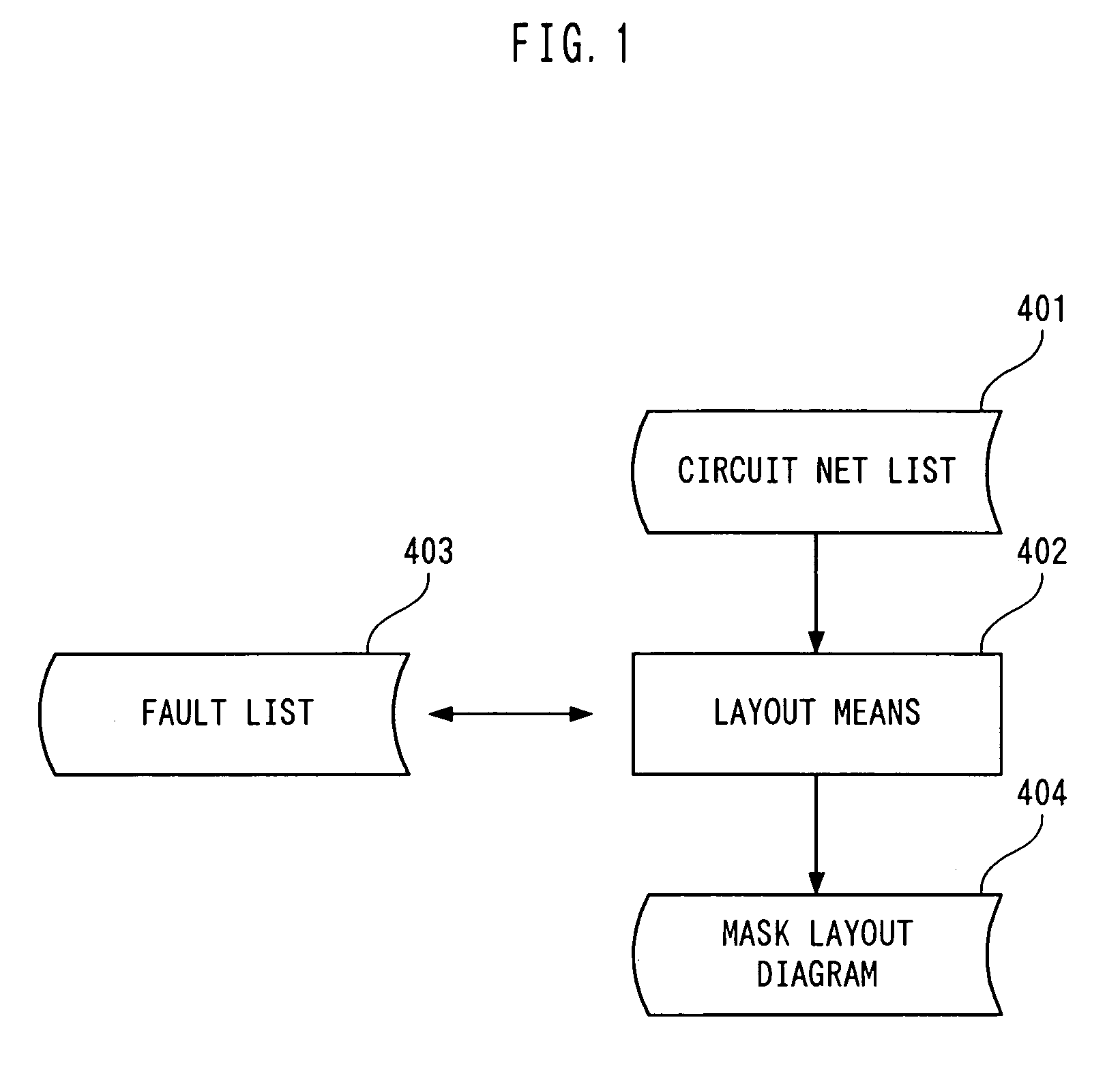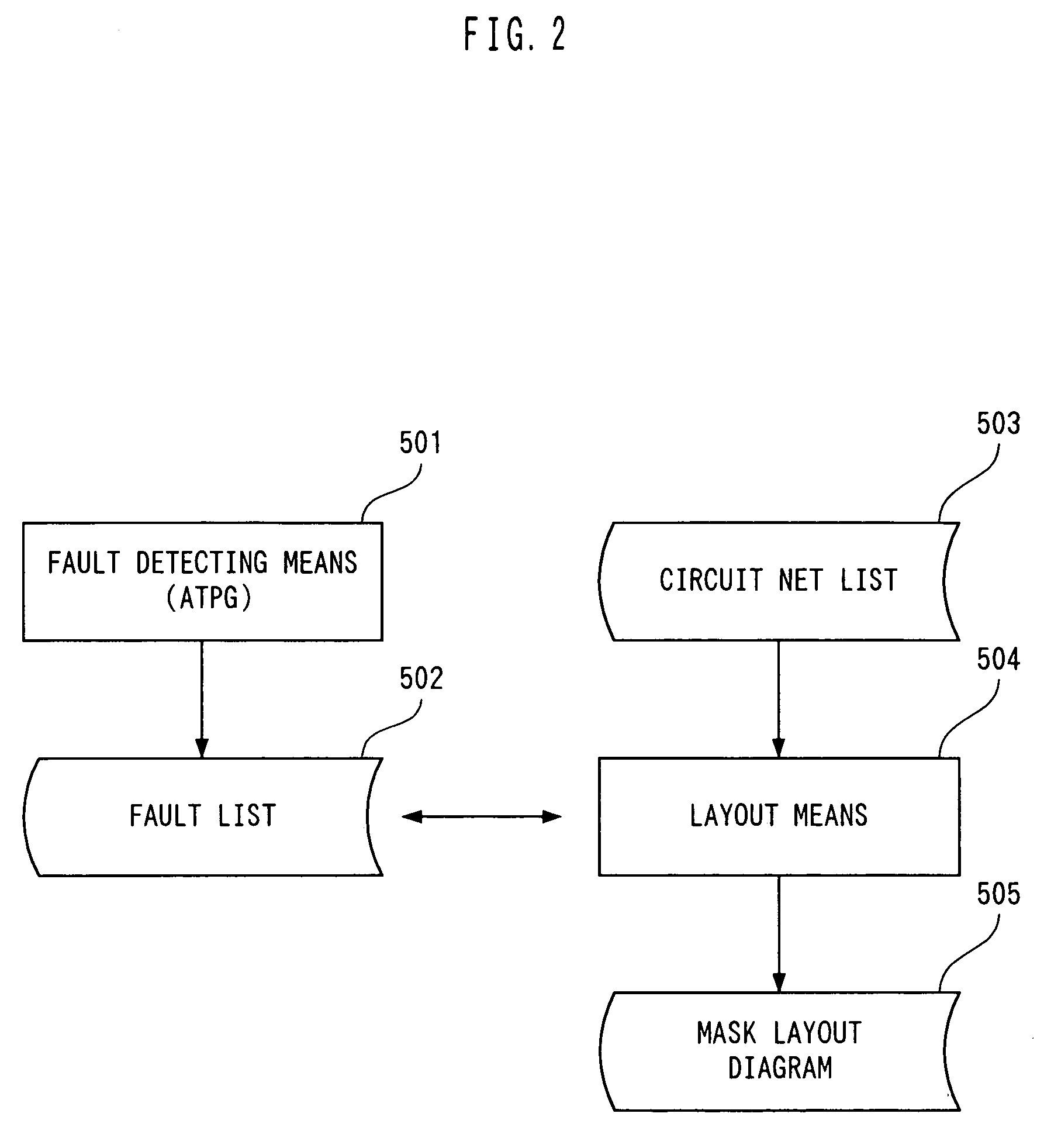Fault detecting method and layout method for semiconductor integrated circuit
- Summary
- Abstract
- Description
- Claims
- Application Information
AI Technical Summary
Benefits of technology
Problems solved by technology
Method used
Image
Examples
first embodiment
[0105]FIG. 1 is a diagram useful in explaining a Faults occurring in the integrated circuit vary depending on mask conditions, that is, the layout, wiring, and the type of the mask. They also vary depending on the level of records of use of cells and functional blocks in use. The fault occurrence rate of sites where a fault is likely to occur can be lowered by modifying the layout of the mask or the wiring. When, for example, a mask for a normal signal line is close to a mask for a power line, the integrated circuit is likely to malfunction due to a possible noise from a power supply. In this case, the possibility of a fault occurring can be reduced by increasing the interval between the power line and the mask.
[0106]In the prior art, a layout means 402 simply automatically generates a mask layout diagram 404 indicating the physical layout of a mask pattern or wiring for an integrated circuit based on a circuit netlist 401. According to the first embodiment of the present invention...
second embodiment
[0107]FIG. 2 is useful in explaining the present invention. In this embodiment, faults are detected to create a fault list. If the result of the fault detection indicates that there are faults undetected, new test patterns must be added. Once the fault coverage has increased to a certain level, an enormous amount of time is required to create test patterns to further increase the fault coverage and the test patterns involve a large number of steps. Even the ATPG may generate very long test patterns or may not automatically generate such test patterns. That is, it is difficult to achieve a fault coverage of 100% and in most cases, undetected faults remain. These undetected faults are missed even if they are occurring actually because there are no test patterns that can detect them. Certain measures must be taken to minimize the occurrence of such faults.
[0108]Thus, according to the second embodiment, a fault list 502 output from a fault detecting means 501 is loaded in a layout means...
third embodiment
[0110]FIG. 3 is useful in explaining the present invention. One of the reasons why a large amount of processing time is required for the fault detection is faults that are difficult to detect or cannot be detected.
[0111]In the fault detection, the detection time required to detect each fault is not uniform and varies significantly depending on how easily the fault is detected or the amount of events occurring during the detection. If a large amount of events occur during the detection, the load on hardware for a fault detector increases the amount of processing time. The fault detection is more effective when test patterns that are more likely to be detected or faults that can be more easily detected are processed before faults that require a larger amount of processing time due to events or when another measures are taken without processing the latter faults.
[0112]Some of the faults in the circuit that are difficult to detect are known. For example, flipflop pins on scan lines in a...
PUM
 Login to View More
Login to View More Abstract
Description
Claims
Application Information
 Login to View More
Login to View More - R&D
- Intellectual Property
- Life Sciences
- Materials
- Tech Scout
- Unparalleled Data Quality
- Higher Quality Content
- 60% Fewer Hallucinations
Browse by: Latest US Patents, China's latest patents, Technical Efficacy Thesaurus, Application Domain, Technology Topic, Popular Technical Reports.
© 2025 PatSnap. All rights reserved.Legal|Privacy policy|Modern Slavery Act Transparency Statement|Sitemap|About US| Contact US: help@patsnap.com



